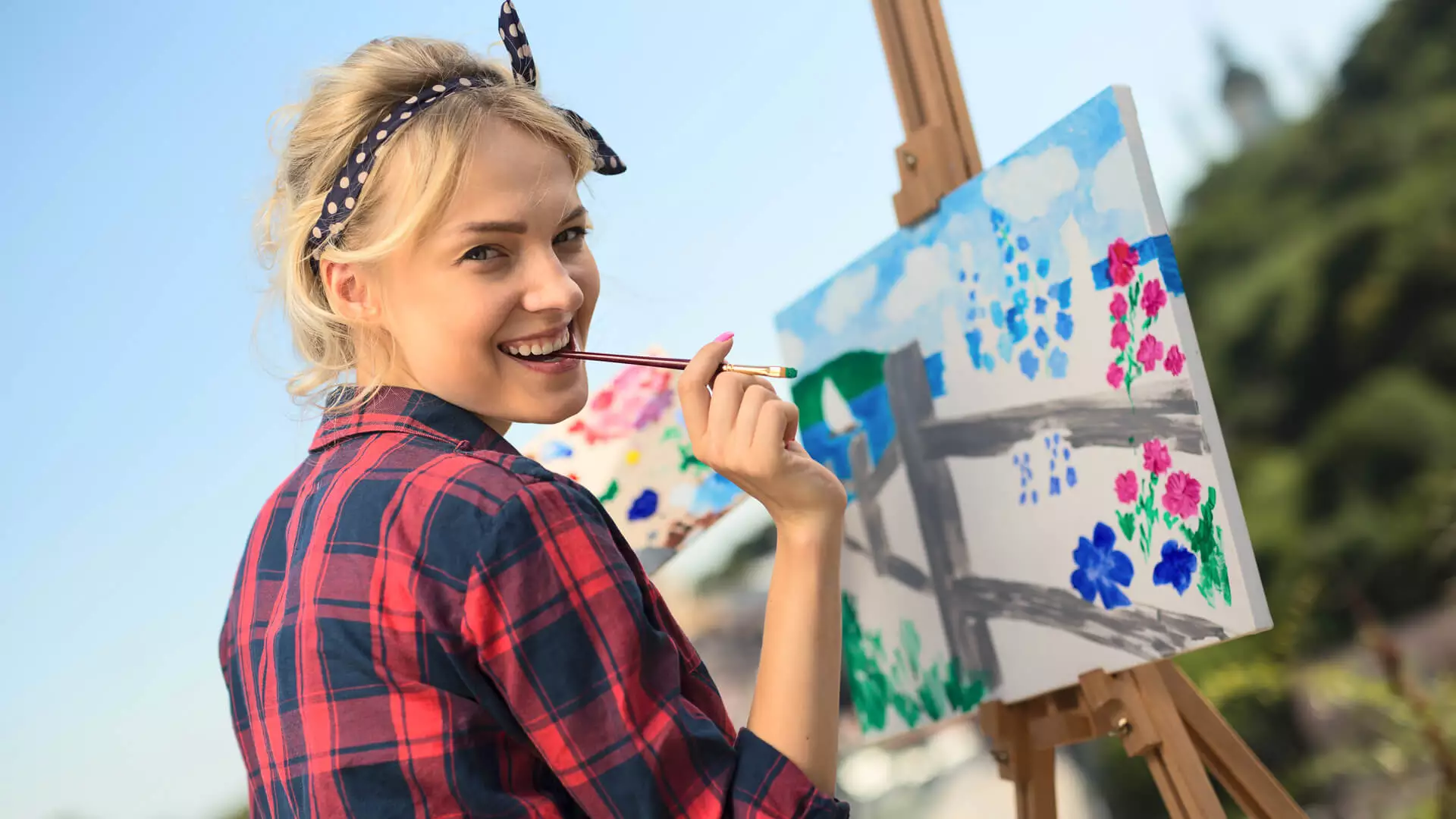
Art therapy is a common psychotherapeutic technique that allows not only to better understand the patient, but also to help him resolve his internal conflicts, throw out accumulated emotions and simply find peace of mind. The concept of art therapy includes visual arts, plastic arts, ceramics, and other types of fine art. This technique is most often used when working with children. Art therapy allows you to cope with low self-esteem, stress, phobias, fears, and a whole range of other psychological problems.
“Painting is the perfect distraction. I don't know of anything else that absorbs the mind more completely without exhausting the body. Whatever the immediate concerns or anxieties for the future, as soon as the picture is started, they no longer have a place in thoughts. They go into shadow and darkness. The whole light of a person’s thoughts is concentrated on work. Time stands respectfully aside.” These words belong to Winston Churchill, who is one of the most famous politicians of the 20th century. Not everyone knows that he had to overcome periods of depression throughout his life. Painting classes helped him cope with his condition and give vent to his emotions.
Art therapy is a type of psychotherapy based on the close relationship between art and creativity. Most often, when we talk about art therapy, we mean visual arts therapy. Art therapy restores a sense of calm, harmony, helps to better understand oneself, realize one’s goals and desires.
Sometimes it’s easier to draw a problem than to talk about it in words. Drawing, color, images help you express yourself safely. As a result of emotional release, physical and mental well-being improves, abilities and talents develop.
Techniques in the field of art therapy are distinguished by their diversity. The most popular of them:
• video therapy;
• mask therapy;
• theater therapy;
• plastic;
• modeling (plasticine, clay);
• play therapy;
• visual therapy;
• ceramics;
• fairytale therapy.
The effectiveness of art therapy has been proven in practice: when creating any creative product, the patient puts part of himself, his thoughts, experiences, and emotions into it. Therefore, it is in the visual arts that a person’s personality is most clearly manifested.
The IsraClinic uses the method of psycho-rehabilitation through free creative thinking. Spontaneous drawing, which is used in this technique, helps to calm down, distract from the usual annoying thoughts, relax, and, at the same time, concentrate. By drawing in matrix cells without a specific plan or design, obeying the spontaneous movement of the hand, we actualize suppressed emotions and express them in spontaneous images. With the help of spontaneous drawings, you can give a socially acceptable outlet for aggression and other negative feelings.
This method of psychotherapy is best demonstrated when working with children and adolescents. Due to their age, they are more open and quite easy to work with. Art therapy will clearly show what is happening to the child at the moment, what he is thinking or experiencing.
By performing drawings day after day, over a long period of time, we regain our inner harmony, actualize the desire for self-realization, develop creative abilities and increase self-esteem.
The technique, when used regularly, helps improve the quality of life and satisfaction of healthy people, but its uniqueness is that it is effective for psycho-rehabilitation in cases of severe mental disorders, drug addiction, and psychosomatic diseases.
To consolidate the results, we recommend that patients continue art therapy upon returning home, which helps to consolidate the results of treatment and serves as a good maintenance therapy to prevent relapse of the disease.
Indications for the use of art therapy include:
• difficulties in emotional development;
• stressful situations;
• depressive state;
• low mood;
• emotional instability;
• acute feelings about rejection of oneself by other people;
• loneliness;
• internal conflicts;
• low self-esteem;
• fear;
• phobias;
• anxiety and suspiciousness;
• intense jealousy.
Psychotherapy is very often carried out not only for treatment, but also as prevention. It gives good results and is indicated in group and individual therapy. Preventive art therapy is carried out:
• when experiencing stress;
• after shock conditions;
• after an illness;
• after divorce and in other similar life situations.
The specialists of the «IsraClinic» are experienced professional psychotherapists and psychologists who are good at working and successfully conducting psychotherapy even with the most difficult patients. By contacting us, you can be sure that you and your loved ones will be treated by experienced specialists who will not only provide comprehensive treatment, but also give a number of useful recommendations regarding lifestyle and changes in environment.